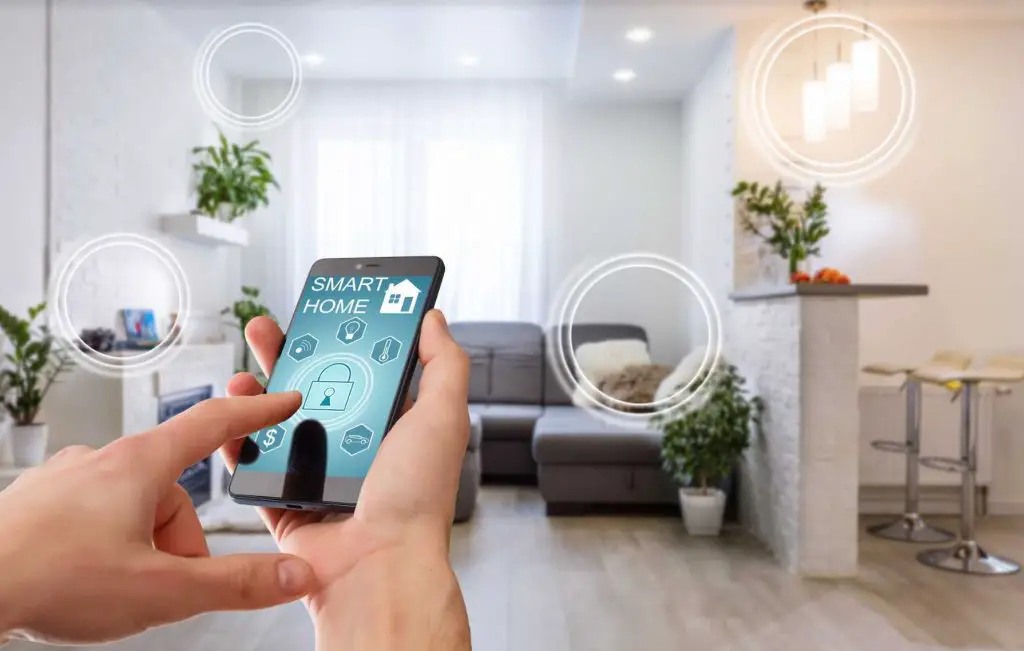The Fourth Industrial Revolution brought with it disruptive technologies like the Internet of Things (IoT), which gave devices the ability to “talk” to each other. Today, smart devices are practically everywhere. They can be phones, cars, speakers, or refrigerators.
There are even homes and cities that are “smart.” Smart devices are increasing exponentially—smart devices in 2020 numbered more than 9 billion; by 2030, the number is projected to reach 29 billion.
Read: 5 Myths About Software Development You Must Know
What makes them smart, though? A smart device is deemed smart because it can connect to other devices. Its sensors, chips, and software allow it to collect and share data with other devices. This ability makes the Internet of Things incredibly useful, and that’s why smart devices are found in almost all businesses and industries. The devices are used for varied purposes, from measuring a runner’s heartbeat per minute to helping the International Space Station send data back to Earth.

Source: AdobeStock
Read: How Can Artificial Intelligence be Used in Education
How to develop IoT software successfully
However, IoT development isn’t as simple as connecting smart devices to networks. You have to ensure that an application architecture is built in such a way that collecting, processing, and storing user data goes smoothly. This action includes ensuring you have an effective gateway—the hub from which devices and sensors are connected and where data transmission happens. An efficient gateway can ensure that you’re collecting valuable data and not just noise. It also makes sure your IoT network works seamlessly.
Today, IoT devices are getting smarter, and services are getting more sophisticated. Developing successful IoT software is, therefore, more crucial than ever. Moreover, the success of IoT products often relies on how well the software performs.
Below are a few tips to ensure the success of developing IoT software:
1. Set up clear goals
Setting up plans and goals before embarking on a project may seem basic, but this can sometimes be neglected. Demand for IoT is enormous—in 2021, the worldwide market for IoT is estimated to be more than USD$260 billion. This vast market size may sometimes drive some developers to sacrifice quality over speed, resulting in haphazardly written software. To avoid this pitfall, setting up realistic and quantifiable objectives can guide your team toward your primary goal.
You can also list down the obstructions and errors you should avoid. IoT developers can face challenges that need to be addressed, such as security and the need to keep up with IoT market trends. Setting quantifiable goals like these can help give your team direction instead of putting down nebulous concepts like “developing great software” without defining what makes it great.
Read: How Artificial Intelligence Can Power Your Retirement
2. Implement hardware security
To develop a successful suite of IoT software, make sure that your hardware security is set up correctly. Not implementing hardware security during the development phase often results in low-quality software. Security vulnerabilities, which increased as the number of connected devices grew over the years, are exacerbated. Consequently, these devices became tempting targets for cybercriminals, resulting in data breaches and other security issues.
There are a lot of ways for hackers to cause mischief through the IoT network. That’s why the device’s connections to the clouds and other devices should have a robust security solution and scalability. One way to secure hardware is by implementing an authentication protocol at the silicon level.
With an authentication protocol in place, devices attempting to connect to a grid network or factory automation system would have their origins checked first. A security check like this would prevent devices with dubious provenance from connecting to secure networks and causing data leaks.
Read: Skills that You Need To Become A Cyber Security Expert
3. Conduct tests and reviews
Murphy’s Law states that “anything that can go wrong will go wrong.” Engineers swear by this dictum; thus, constant testing and exhaustive code review should be a top priority. Rigid quality control for software should be communicated from manufacturers to engineers and programmers.
Moreover, IoT applications are complex, which can result in security vulnerabilities and subpar software. Failed transactions among sensors, hardware devices, or applications can result in a system failure. Constant code monitoring, evaluation, and assessment should be de rigueur.
Assessing your successes and failures along the way helps you get closer to your goals.
Read: How Artificial Intelligence Predicts Trading Market
4. Ensure IoT software is geared toward end-users
At the end of the day, IoT applications and software are meant for the convenience of customers. These IoT devices help people in a lot of ways, directly and indirectly. Ensuring your IoT software provides customers with a meaningful and good user experience is a big win—but how can you do this?
To succeed, understanding your customer’s requirements is a significant factor. With features and functionalities coded for seamless integration, your IoT products can become more attractive to consumers. For example, an IoT product in manufacturing uses software for two types of end-users—those in operation and the managers. The operations people supervise the devices, control the sensors, and send commands to devices. Meanwhile, managers handle data analytics and other information on dashboards, make business decisions, and generate and file reports.
For these end-users, the user interface they use is designed to cater to what they need to do, making their jobs easier.
Conclusion
In closing, IoT devices are used in almost all industries. As smart devices grow exponentially, their market likewise expands at a breathtaking pace. Software development for IoT devices can be complex. That’s why successfully developing the software that makes the devices work seamlessly is crucial.
To ensure its success, developers need to set clear goals, implement hardware security, conduct continuous software assessments and reviews, and always keep the needs of the end-users in mind.
If you like the content, we would appreciate your support by buying us a coffee. Thank you so much for your visit and support.



